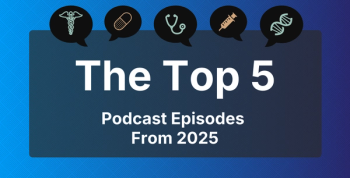
EndoPredict Better Than Oncotype DX in Predicting DR in Breast Cancer
A study has found that an 8-gene signature score, combined with nodal status and tumor size, obtained from the EndoPredict breast cancer test might be more accurate at predicting the recurrence of breast cancer, compared with the recurrence score of Oncotype DX.
A study, funded by Breast Cancer Now, has found that the 8-gene signature (EP score) obtained from the EndoPredict breast cancer test might be more accurate at predicting the recurrence of breast cancer, compared with the recurrence score (RS) of Oncotype DX.
The Oncotype DX Breast Cancer Assay, developed by Genomic Health, is a 21-gene assay that
In the current study, published in the Journal of the National Cancer Institute, scientists from the United Kingdom compared the prognostic information from the RS score and EPclin for a 10-year risk of disease recurrence. The authors compared the RS score, EP score, and the clinicopathologic parameters in 928 patients with ER-positive disease, who had been treated with anastrazole or tamoxifen for 5 years. Both early (0 to 5 years) and late (5 to 10 years) disease recurrence was compared according to the patient’s nodal status.
The analysis showed that EPclin provided significantly more prognostic information that the RS score, especially in patients with nodal disease and who had late disease recurrence. EPclin and RS identified 58.8% and 61.7% patients as low risk, with hazard ratios for non-low versus low risk of 5.99 (95% confidence interval [CI] = 3.94 to 9.11) and 2.73 (95% CI = 1.91 to 3.89), respectively.
Nearly 6% of patients identified as low risk by EPclin developed secondary disease compared with a little over 10% of patients identified as low risk by RS. Importantly, of those classified as low risk by the EndoPredict test, only 0.5% developed secondary breast cancer after a decade, while 7% of those identified as low risk by Oncotype DX had a recurrence.
This study could prove a tremendous advantage to both clinicians and patients, according to the study’s lead author Richard Buus, MD. “It could help improve treatment for a large number of women with breast cancer by allowing doctors to better predict which women are least likely to go on to develop secondary cancer, and could therefore be spared from undergoing the chemotherapy often offered early on in treatment to reduce that risk,” he said in a
“Oncotype DX remains a valuable tool for both clinicians and patients. But we need to see the best and most cost-effective technologies made routinely available on the NHS, and this research suggests EndoPredict could be another step forward. Based on this strong evidence, we would encourage NICE to consider this technology for routine use on the NHS,” Baroness Delyth Morgan, Chief Executive at Breast Cancer Now, said.
Reference
Buus R, Sestak I, Kronenwett R, et al. Comparison of EndoPredict and EPclin with Oncotype DX recurrence score for prediction of risk of distant recurrence after endocrine therapy. J Natl Cancer Inst. 2016;108(11). pii: djw149. doi:10.1093/jnci/djw149.
Newsletter
Stay ahead of policy, cost, and value—subscribe to AJMC for expert insights at the intersection of clinical care and health economics.








































